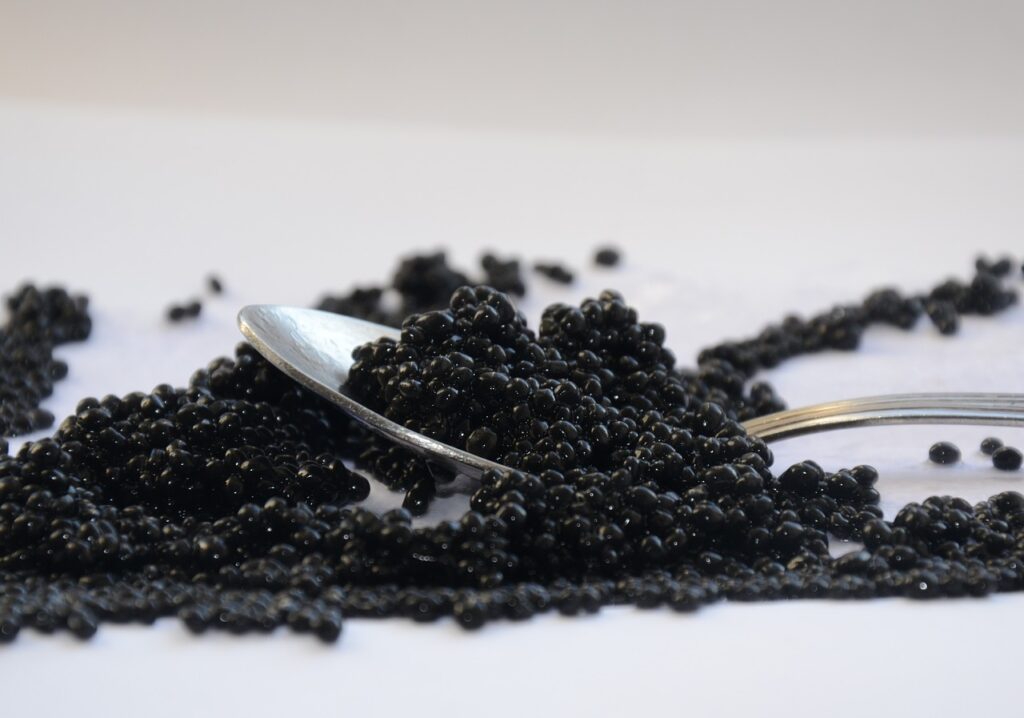What is Caviar?
Caviar is a luxury food made from the eggs of certain fish, most notably sturgeon. It has been a part of Iranian cuisine for centuries, and was once so abundant that it was served as a common dish in households across the country. The production of caviar is strictly controlled in Iran nowadays to protect its long-term viability.
Things to Know About Iranian Caviar
In this article we will talk about the most important things you need to know about the Iranian Caviar.
1 – The History of Caviar in Iran:
The history of Iranian Caviar in Iran dates back centuries, to a time when the sturgeon fish was so abundant in the country’s rivers and lakes that it was served as a common dish in households across the country. Today, Iranian Caviar is still an important part of Iranian culture, but its production is carefully regulated to ensure sustainability. This is the reason it is the Best caviar in the world.
2 – The Types of Iranian Caviar:
Iranian Caviar comes in many different varieties, each with its own distinct flavor and texture. The most prized type of caviar is Iranian Beluga caviar, which is harvested from wild Beluga sturgeon in the Caspian Sea. This caviar is typically firm and creamy, with a delicate yet complex flavor. Other popular types of caviar include Osetra and Sevruga caviar, which are both harvested from wild sturgeon in the Caspian Sea.
3 – How Iranian Caviar is Produced:
Iranian Caviar is produced by removing the eggs from a fish and then curing them in salt. The eggs are then typically packed into tins or jars and refrigerated until they are ready to be eaten.
4 – How to Serve and Eat Iranian Caviar:
Iranian Caviar is typically served as an hors d’oeuvre, with crackers or bread on the side. It can also be used as a garnish for other dishes, such as eggs or potatoes. When eating Iranian Caviar, it is important to use a non-metallic spoon to avoid altering the flavor of the Iranian Caviar.
5 – The Price of Iranian Caviar:
Why is caviar so expensive? I have asked this question many times. Iranian Caviar is a luxury food item, and as such, caviar price is set accordingly. A tin of Iranian Beluga caviar can cost upwards of 200 pounds, while a jar of Ossetra caviar and almas caviar may cost around 100 pounds. If you buy from Caspian Monarque that is based in London, UK then you will get high quality Iranian Caviar in reasonable prices.
6 -The Health Benefits of Iranian Caviar:
Iranian Caviar is a rich source of protein, omega-3 fatty acids, and vitamins A, B12, and D. It has also been shown to have some health benefits, such as reducing the risk of heart disease and stroke.
7 – The Environmental Impact of Iranian Caviar:
Iranian Caviar production can have a significant impact on the environment. The sturgeon fish is an endangered species, and Iranian Caviar production has contributed to this decline. In addition, the use of harmful chemicals and pollutants in Iranian Caviar production can pollute local water sources.
8 – The Ethical Considerations of Iranian Caviar:
Iranian Caviar production also raises ethical concerns. The sturgeon fish is an endangered species, and Iranian Caviar production has contributed to this decline. In addition, the process of harvesting Iranian Caviar can be inhumane, as it involves killing the fish.
9 – How to Choose a Sustainable Iranian Caviar:
When choosing a sustainable Iranian Caviar, look for products that are certified by the Marine Stewardship Council or other similar organizations. These products have been produced in a way that is environmentally sustainable and does not contribute to the decline of the sturgeon fish population. You should also avoid products that are harvested from farms that use harmful chemicals or pollutants.
10 – How to Store Iranian Caviar:
Iranian Caviar should be stored in a cool, dark place. Once opened, it should be consumed within two days. Iranian Caviar can be frozen for up to six months, but this will affect the flavor and texture of the product.



